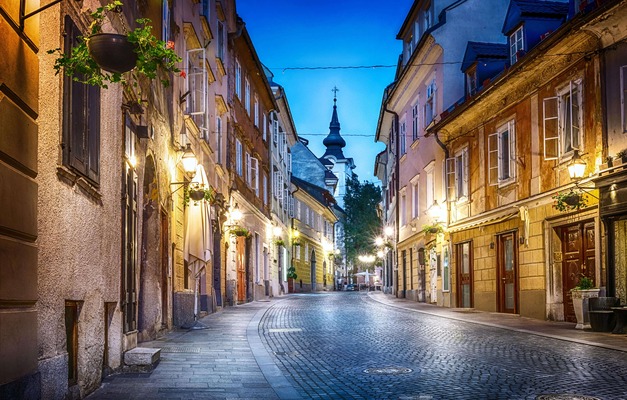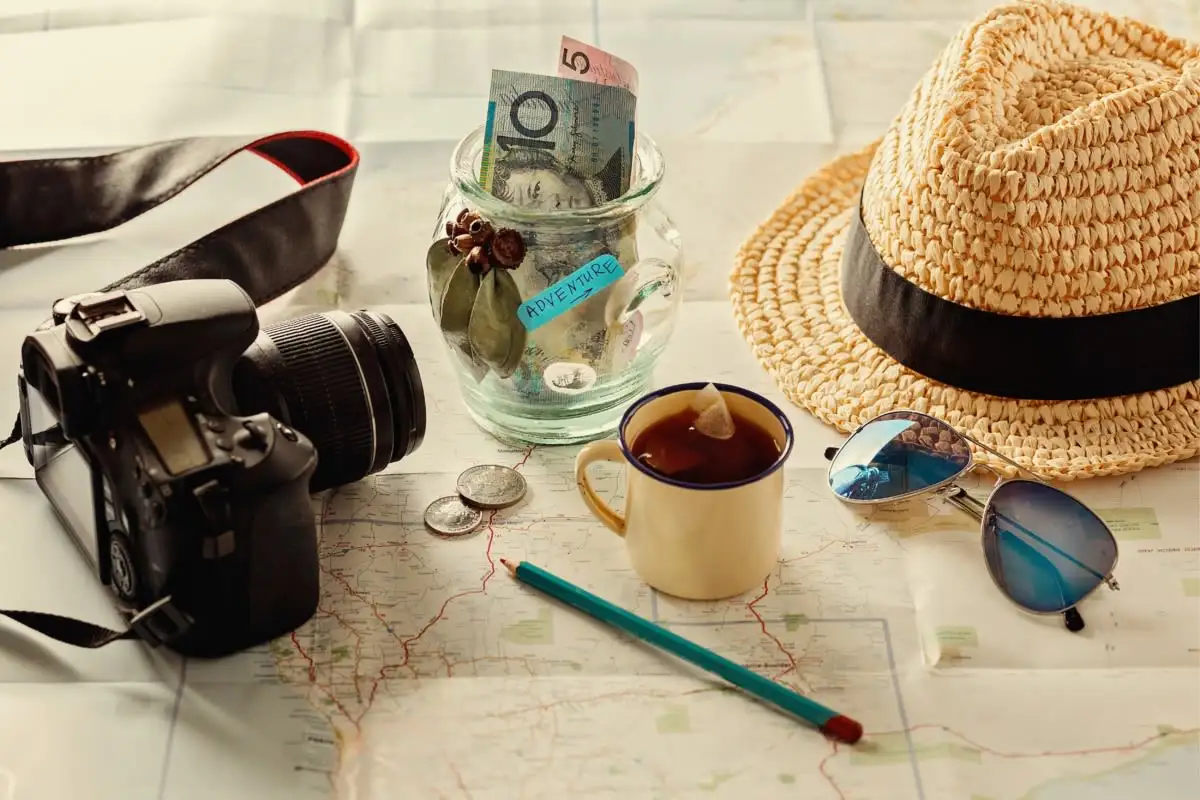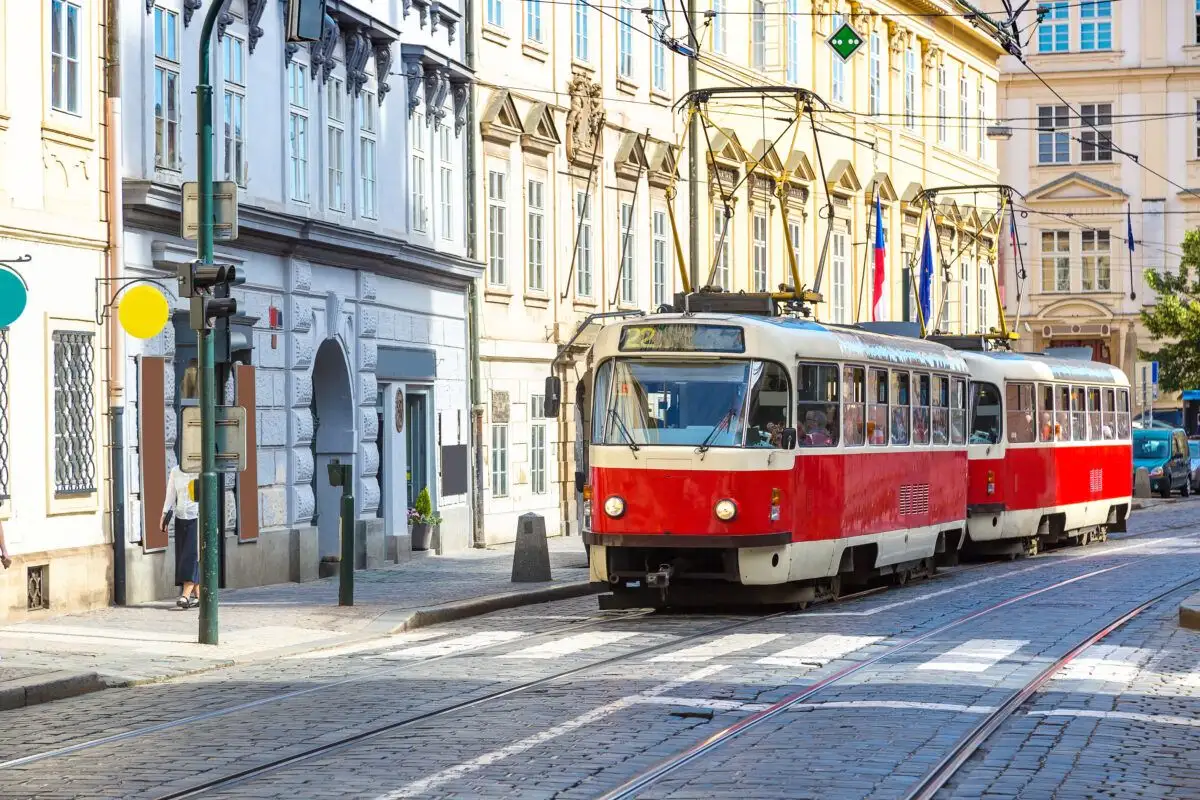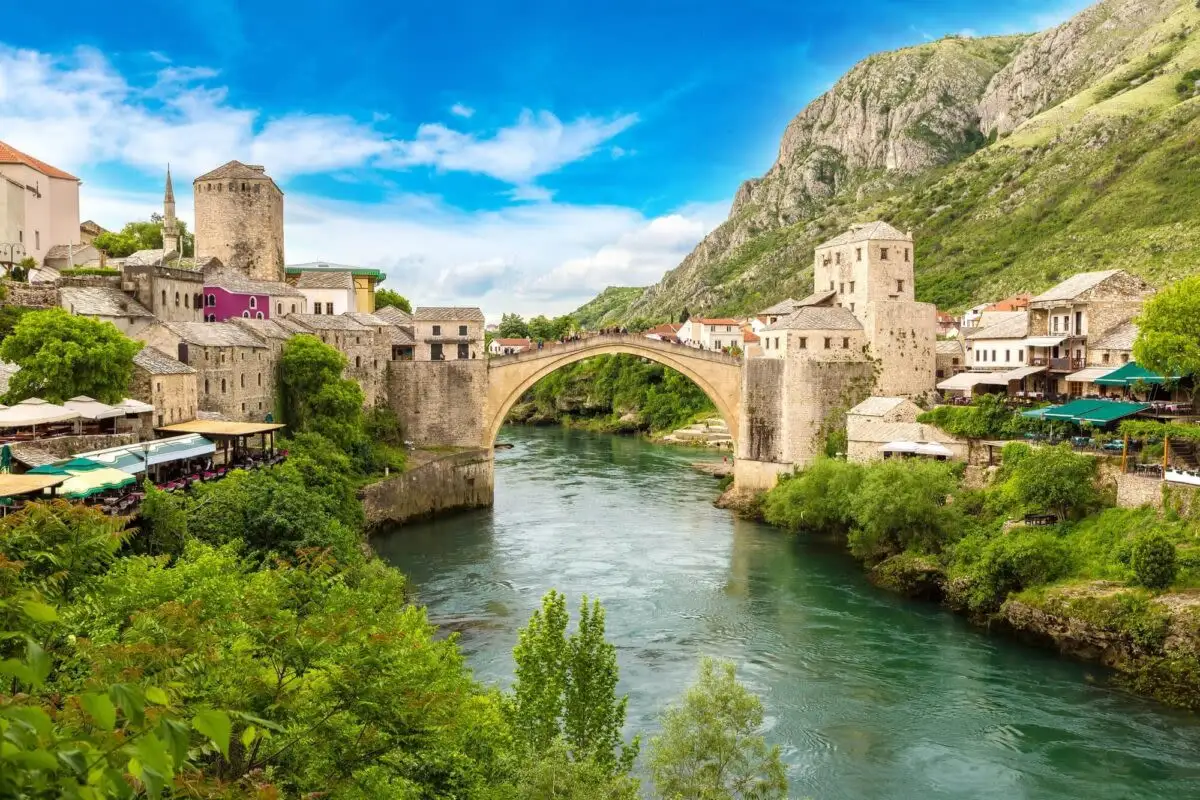
Explore the Hidden Gems of Croatia: 8-Day Itinerary
 8 Day Tour of Zagreb, Split and Dubrovnik
8 Day Tour of Zagreb, Split and Dubrovnik
Overview
Trip Map
Itinerary
Inclusions
Reviews




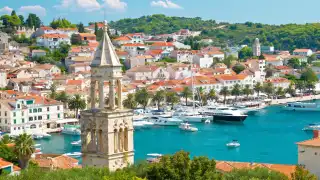


8 Days 7 Nights
Best Time: Jan-Dec
Cultural Exploration
History Buffs
Discover the very best of Croatia in 8 days, from iconic Adriatic beauty to hidden historic gems. After exploring the charming streets of the capital city of Zagreb, you'll travel by train to the sun-kissed Dalmatian coast, where you'll visit Split and Dubrovnik and take a ferry excursion to the famed Croatian island of Hvar. Enjoy private guided tours in each city, including a revealing Game of Thrones-themed walk in Dubrovnik. Enjoy the guidance of your detailed itinerary throughout your entire journey.
- Discover the Gradec, Zagreb's medieval quarter where you'll experience stunning city views
- Explore Split's Old Town & discover the ruins of Diocletian's Palace, a living Roman history museum
- Gaze in wonder at Krka National Park's cascading Skradinski buk waterfalls
- Wander Dubrovnik's Old Town walls and look out over the waves crashing below
- Journey to Hvar Island by ferry where you can enjoy some beach time on the beautiful Pakleni Islands
Discover the very best of Croatia in 8 days, from iconic Adriatic beauty to hidden historic gems. After exploring the charming streets of the capital city of Zagreb, you'll travel by train to the sun-kissed Dalmatian coast, where you'll visit Split and Dubrovnik and take a ferry excursion to the famed Croatian island of Hvar. Enjoy private guided tours in each city, including a revealing Game of Thrones-themed walk in Dubrovnik. Enjoy the guidance of your detailed itinerary throughout your entire journey.
- Discover the Gradec, Zagreb's medieval quarter where you'll experience stunning city views
- Explore Split's Old Town & discover the ruins of Diocletian's Palace, a living Roman history museum
- Gaze in wonder at Krka National Park's cascading Skradinski buk waterfalls
- Wander Dubrovnik's Old Town walls and look out over the waves crashing below
- Journey to Hvar Island by ferry where you can enjoy some beach time on the beautiful Pakleni Islands

Old Town
Architecture

Lower Town
Architecture

Diocletian’s Palace
Castles & Chateaux

Bačvice Beach
Natural Beauty

Old City Walls
Historic Landmarks

Dubrovnik's Beaches
Natural Beauty
Must see sights

Old Town
Architecture

Lower Town
Architecture

Diocletian’s Palace
Castles & Chateaux

Bačvice Beach
Natural Beauty

Old City Walls
Historic Landmarks

Dubrovnik's Beaches
Natural Beauty
Starting from
$1585
per person
 Not included
Not included Secure Your Customizable Trip
Enter your details to embark on a journey that can be tailored just for you.
Start
Travelers
0 travelers
Add Room
Remove Room
Preferred Hotel Stars
Select Hotel Stars
Craft Your Own Itinerary
Select your interests and destinations for a trip plan inspired by you.
Croatia’s Coastal Charm Trip - Map & Itinerary
Enable/Disable Map Scrolling
Click To Make Map Interactive

Croatia’s Coastal Charm Trip Timeline
 Edit Details
Edit DetailsArrival
1 nights
Zagreb
Croatia
Train: 6.5h
4 nights
Split
Croatia
Ferry: 5h
2 nights
Dubrovnik
Croatia
Departure
Day-By-Day Itinerary of Croatia’s Coastal Charm Trip

Day 1
Arrive Zagreb
Day 1
Arrive Zagreb



To Be Determined
Transfer from Airport
Zagreb has one main airport, Zagreb Franjo Tuđman Airport, or simply Zagreb Airport, where almost all visitors arrive. Taxis are available directly at the terminal exit, or you can arrange a private transfer for added convenience. Uber is also available for those with the app.

Day 1
Arrive Zagreb


Day 1
Arrive Zagreb




To Be Determined:
Transfer from Airport
Mid-Day:
Merchant's Old Town
Afternoon/Late Afternoon:
Lower Town


Day 2
Zagreb to Split
Day 2
Zagreb to Split





9:00 AM - 11:30 AM
Highlights of Zagreb, Guided Tour
On this 2.5-hour private tour, you will see the main sights and vibrant everyday life in Zagreb. You will visit the oldest parts of town, hear genuine Zagreb stories and legends, and enjoy a walk through the old town's green promenade. Highlights include Zagreb cathedral, the short funicular connecting the lower and uppers parts of the city, the oldest part of the city called Gradec were the city's parliament and best museums are to be found, the famous pedestrianized Tkalčićeva Street that has one of the most engaging and fun dining areas in Southern Europe and the open-air market of Dolac.

Museum of Broken Relationships
Enjoy an intriguing and bitter-sweet visit to a unique museum focused on heartbreak.
Show More

St Mark's Church and Square
Be sure to stop by the picturesque square and church at the heart of Old Zagreb.
Show More

Lotrščak Tower
Historic lookout tower
Show More

Museum of Broken Relationships
Enjoy an intriguing and bitter-sweet visit to a unique museum focused on heartbreak.
Show More

St Mark's Church and Square
Be sure to stop by the picturesque square and church at the heart of Old Zagreb.
Show More

Lotrščak Tower
Historic lookout tower
Show More

Museum of Broken Relationships
Enjoy an intriguing and bitter-sweet visit to a unique museum focused on heartbreak.
Show More
prev
next

Day 2
Zagreb to Split


Museum of Broken Relationships
 Highlight of Highlights of Zagreb, Guided Tour
Highlight of Highlights of Zagreb, Guided TourEnjoy an intriguing and bitter-sweet visit to a unique museum focused on heartbreak.
One of Zagreb's most quirky museums is the Museum of Broken Relationships. At first a temporary exhibition only, it struck such a chord with the public that it became a permanent museum in 2010, displaying objects connected with all aspects of human relationships and break-ups. A compelling and sometimes visceral monument to wistful memory and raw emotion, visitors are invited to overcome a difficult separation by donating memories and thus recognizing the end of a relationship.

St Mark's Church and Square
 Highlight of Highlights of Zagreb, Guided Tour
Highlight of Highlights of Zagreb, Guided TourBe sure to stop by the picturesque square and church at the heart of Old Zagreb.
Markov trg at the center of Gradec hosts the surprisingly modest Sabor or national parliament and the rather squat but nonetheless attractive St Mark's Church, with its famously multi-colored roof tiles displaying the coat of arms of Zagreb and Croatia. The interior has been ravaged over time by earthquake, fire, and 19th-century "restorers", but some parts, like the south portal, are original. The building on the other side is the Banski dvor, or Ban's Palace, originally the seat of the Hapsburg-appointed governor and now the seat of Croatia's government.

Lotrščak Tower
 Highlight of Highlights of Zagreb, Guided Tour
Highlight of Highlights of Zagreb, Guided TourHistoric lookout tower
A tower that once protected the southern city gate from danger. A spiral staircase inside leads to a small wooden terrace offering superb views of Zagreb's roofscape.

Museum of Broken Relationships
 Highlight of Highlights of Zagreb, Guided Tour
Highlight of Highlights of Zagreb, Guided TourEnjoy an intriguing and bitter-sweet visit to a unique museum focused on heartbreak.
One of Zagreb's most quirky museums is the Museum of Broken Relationships. At first a temporary exhibition only, it struck such a chord with the public that it became a permanent museum in 2010, displaying objects connected with all aspects of human relationships and break-ups. A compelling and sometimes visceral monument to wistful memory and raw emotion, visitors are invited to overcome a difficult separation by donating memories and thus recognizing the end of a relationship.

St Mark's Church and Square
 Highlight of Highlights of Zagreb, Guided Tour
Highlight of Highlights of Zagreb, Guided TourBe sure to stop by the picturesque square and church at the heart of Old Zagreb.
Markov trg at the center of Gradec hosts the surprisingly modest Sabor or national parliament and the rather squat but nonetheless attractive St Mark's Church, with its famously multi-colored roof tiles displaying the coat of arms of Zagreb and Croatia. The interior has been ravaged over time by earthquake, fire, and 19th-century "restorers", but some parts, like the south portal, are original. The building on the other side is the Banski dvor, or Ban's Palace, originally the seat of the Hapsburg-appointed governor and now the seat of Croatia's government.

Lotrščak Tower
 Highlight of Highlights of Zagreb, Guided Tour
Highlight of Highlights of Zagreb, Guided TourHistoric lookout tower
A tower that once protected the southern city gate from danger. A spiral staircase inside leads to a small wooden terrace offering superb views of Zagreb's roofscape.

Museum of Broken Relationships
 Highlight of Highlights of Zagreb, Guided Tour
Highlight of Highlights of Zagreb, Guided TourEnjoy an intriguing and bitter-sweet visit to a unique museum focused on heartbreak.
One of Zagreb's most quirky museums is the Museum of Broken Relationships. At first a temporary exhibition only, it struck such a chord with the public that it became a permanent museum in 2010, displaying objects connected with all aspects of human relationships and break-ups. A compelling and sometimes visceral monument to wistful memory and raw emotion, visitors are invited to overcome a difficult separation by donating memories and thus recognizing the end of a relationship.
prev
next


Day 3
Split
Day 3
Split



9:00 AM - 11:00 AM
Split Old Town Walking Tour
This two-hour guided tour will take you to the Roman emperor Diocletian's 1700-year-old palace which was built as his personal rest home. Walk from the Bronze Gate through the central hall of the ancient cellars is the main communication line between the busy waterfront promenade, the Riva, and the palace's main forecourt, the Peristyle. You'll also stop by the Cathedral of St Duje, one of the most beautiful cultural attractions on the Adriatic coast, the Roman temple of Jupiter (latterly a Christian baptistry), the fabulous Golden Gate, and the medieval Croatian bishop who introduced the Croatian language in religious services.

Peristyle
See the beautiful courtyard which was once the center of the palace, and is now the heart of Split.
Show More

Bronze Gate and Palace Cellars
Enter this ancient gateway to discover palace cellars used as film sets for Game of Thrones.
Show More

Peristyle
See the beautiful courtyard which was once the center of the palace, and is now the heart of Split.
Show More

Bronze Gate and Palace Cellars
Enter this ancient gateway to discover palace cellars used as film sets for Game of Thrones.
Show More

Peristyle
See the beautiful courtyard which was once the center of the palace, and is now the heart of Split.
Show More

Bronze Gate and Palace Cellars
Enter this ancient gateway to discover palace cellars used as film sets for Game of Thrones.
Show More
prev
next

Day 3
Split


Peristyle
 Highlight of Split Old Town Walking Tour
Highlight of Split Old Town Walking TourSee the beautiful courtyard which was once the center of the palace, and is now the heart of Split.
The Peristyle was the central courtyard of the palace complex and the crossing point of its main streets. The columns around the courtyard were pillaged from Egypt, though the officer in charge of the operation must have forgotten to get some extras as four of the columns are clearly different from the others. There's also a black granite Egyptian sphinx on one side dating from 1500 BC which originally flanked the entrance to Diocletian's mausoleum (other sphinxes around the palace were decapitated by Diocletian to allay his superstition that they posed a threat to his rule). If you sit on one of the red cushions scattered around the Peristyle you'll be approached by a waiter with a menu of very expensive drinks, but it may be worth it just to sit and lap up the history and watch people go by. At the southern end of the Peristyle, steps lead up to a cone-shaped, roofless chamber which once served as the palace vestibule. Visitors would wait here before being summoned before the ex-emperor into his private apartments.

Bronze Gate and Palace Cellars
 Highlight of Split Old Town Walking Tour
Highlight of Split Old Town Walking TourEnter this ancient gateway to discover palace cellars used as film sets for Game of Thrones.
While today about 200 feet (60m) from the water, the Bronze Gate originally sat directly on the sea, allowing boats to pull directly up to the palace. As you enter the gate you will find a mass of souvenir and arts & crafts stalls, but just inside the entrance on either side are the substructures, or cellars of the palace. After the palace fell into disrepair, the cellars were used as rubbish pits. Families occupying the apartments above would simply create holes in the floor and voila, they had an instant trash dump with a seemingly unending supply of space. Of course centuries of trash did eventually them fill up and they were only rediscovered in 1956; the excavations continue to this very day. While entrance to the cellar is not free, it provides an excellent idea of what the palace must originally have looked like, as they're an exact mirror image of the imperial living quarters above. Game of Thrones fans will also be happy to learn that the cellar was used as a filming set, including as Daenerys Targaryen's grand Meereen throne room.

Peristyle
 Highlight of Split Old Town Walking Tour
Highlight of Split Old Town Walking TourSee the beautiful courtyard which was once the center of the palace, and is now the heart of Split.
The Peristyle was the central courtyard of the palace complex and the crossing point of its main streets. The columns around the courtyard were pillaged from Egypt, though the officer in charge of the operation must have forgotten to get some extras as four of the columns are clearly different from the others. There's also a black granite Egyptian sphinx on one side dating from 1500 BC which originally flanked the entrance to Diocletian's mausoleum (other sphinxes around the palace were decapitated by Diocletian to allay his superstition that they posed a threat to his rule). If you sit on one of the red cushions scattered around the Peristyle you'll be approached by a waiter with a menu of very expensive drinks, but it may be worth it just to sit and lap up the history and watch people go by. At the southern end of the Peristyle, steps lead up to a cone-shaped, roofless chamber which once served as the palace vestibule. Visitors would wait here before being summoned before the ex-emperor into his private apartments.

Bronze Gate and Palace Cellars
 Highlight of Split Old Town Walking Tour
Highlight of Split Old Town Walking TourEnter this ancient gateway to discover palace cellars used as film sets for Game of Thrones.
While today about 200 feet (60m) from the water, the Bronze Gate originally sat directly on the sea, allowing boats to pull directly up to the palace. As you enter the gate you will find a mass of souvenir and arts & crafts stalls, but just inside the entrance on either side are the substructures, or cellars of the palace. After the palace fell into disrepair, the cellars were used as rubbish pits. Families occupying the apartments above would simply create holes in the floor and voila, they had an instant trash dump with a seemingly unending supply of space. Of course centuries of trash did eventually them fill up and they were only rediscovered in 1956; the excavations continue to this very day. While entrance to the cellar is not free, it provides an excellent idea of what the palace must originally have looked like, as they're an exact mirror image of the imperial living quarters above. Game of Thrones fans will also be happy to learn that the cellar was used as a filming set, including as Daenerys Targaryen's grand Meereen throne room.

Peristyle
 Highlight of Split Old Town Walking Tour
Highlight of Split Old Town Walking TourSee the beautiful courtyard which was once the center of the palace, and is now the heart of Split.
The Peristyle was the central courtyard of the palace complex and the crossing point of its main streets. The columns around the courtyard were pillaged from Egypt, though the officer in charge of the operation must have forgotten to get some extras as four of the columns are clearly different from the others. There's also a black granite Egyptian sphinx on one side dating from 1500 BC which originally flanked the entrance to Diocletian's mausoleum (other sphinxes around the palace were decapitated by Diocletian to allay his superstition that they posed a threat to his rule). If you sit on one of the red cushions scattered around the Peristyle you'll be approached by a waiter with a menu of very expensive drinks, but it may be worth it just to sit and lap up the history and watch people go by. At the southern end of the Peristyle, steps lead up to a cone-shaped, roofless chamber which once served as the palace vestibule. Visitors would wait here before being summoned before the ex-emperor into his private apartments.

Bronze Gate and Palace Cellars
 Highlight of Split Old Town Walking Tour
Highlight of Split Old Town Walking TourEnter this ancient gateway to discover palace cellars used as film sets for Game of Thrones.
While today about 200 feet (60m) from the water, the Bronze Gate originally sat directly on the sea, allowing boats to pull directly up to the palace. As you enter the gate you will find a mass of souvenir and arts & crafts stalls, but just inside the entrance on either side are the substructures, or cellars of the palace. After the palace fell into disrepair, the cellars were used as rubbish pits. Families occupying the apartments above would simply create holes in the floor and voila, they had an instant trash dump with a seemingly unending supply of space. Of course centuries of trash did eventually them fill up and they were only rediscovered in 1956; the excavations continue to this very day. While entrance to the cellar is not free, it provides an excellent idea of what the palace must originally have looked like, as they're an exact mirror image of the imperial living quarters above. Game of Thrones fans will also be happy to learn that the cellar was used as a filming set, including as Daenerys Targaryen's grand Meereen throne room.
prev
next


Day 4
Split
Day 4
Split

Early Morning to Afternoon
Hvar Island
Hvar has a reputation as the Croatian Ibiza, i.e. lots of young people partying as if their lives depended on it, but it's actually much more than that and remains relatively unspoiled and comparatively affordable in relation to the mainland coast. Both of its main towns, Hvar and Star Grad, are lovely medieval towns full of traffic-free alleys surrounded by ancient stone houses; these act as a romantic backdrop to the towns' many cafes from where you can indulge in people-watching and view the fancy yachts filling up the harbor. In the summer, you can take a passenger-only 1-hour catamaran trip directly to Hvar Town. In other months, Hvar is still relatively easy to get to via a 2-hour car ferry to the main island port of Stari Grad. If you do take the ferry, it's still just a short bus or taxi ride to Hvar or Stari Grad - you can even walk to Stari Grad from the ferry port. Keep in mind though that you must be quick off the ferry to catch the bus. If you can afford it, taking a private boat is the ultimate way to experience Hvar, as you can swim, snorkel, and sunbathe along the way. Also keep in mind that while Hvar is happening in the warmer months, it is quite sleepy in the off season. Many restaurants and attractions will be closed, but if you enjoy exploring in peace and quiet, it is the perfect time to visit.

Town of Stari Grad
Stroll the atmospheric narrow streets of this small town nestled at the end of a clear blue bay.
Show More

Pakleni Islands
Hop over to these rocky islands to swim and snorkel in their picturesque little coves and lagoons.
Show More
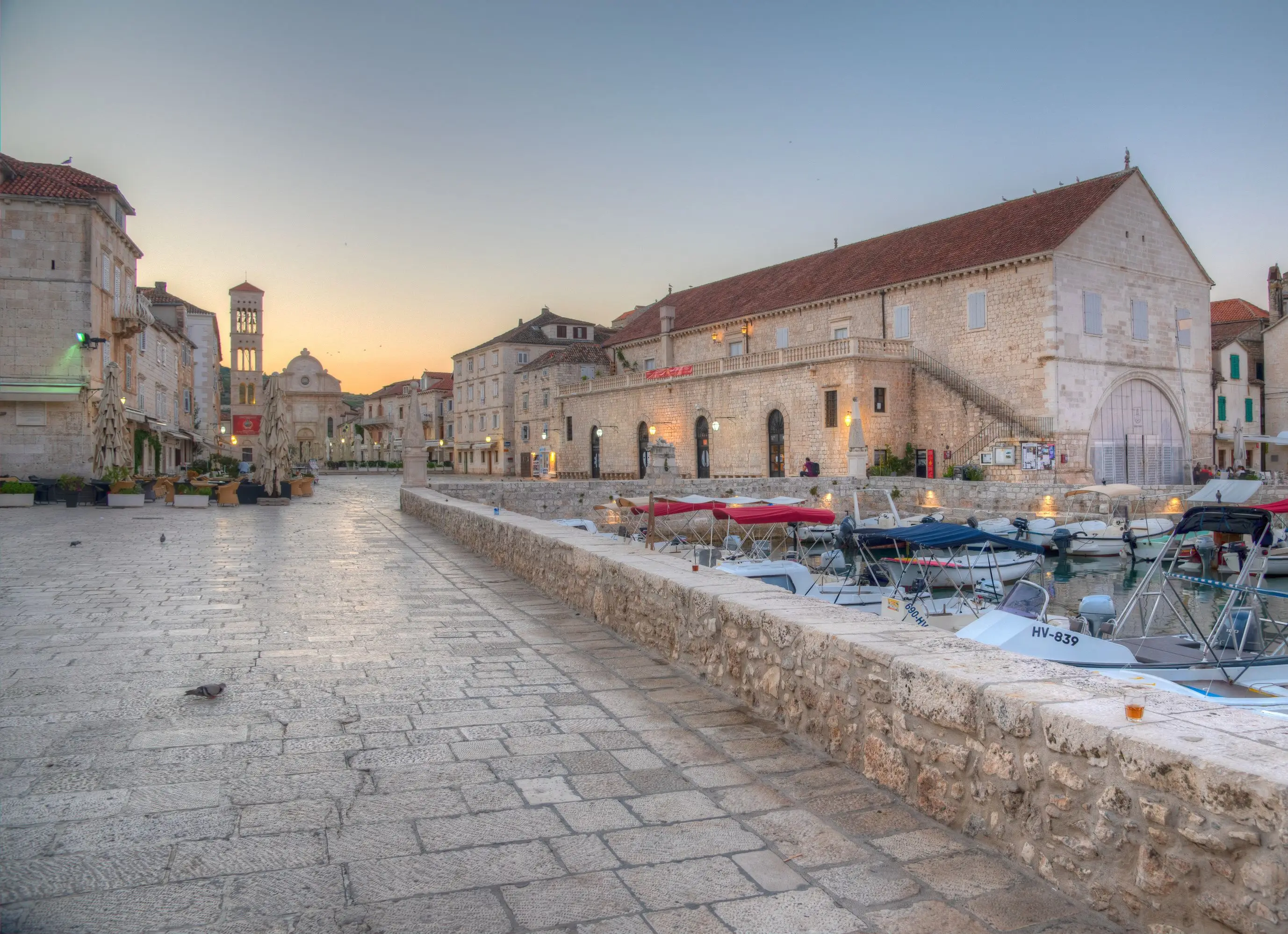
Arsenal & Cathedral of St. Stephen
Check out where war galleys were once repaired on Hvar's main square.
Show More
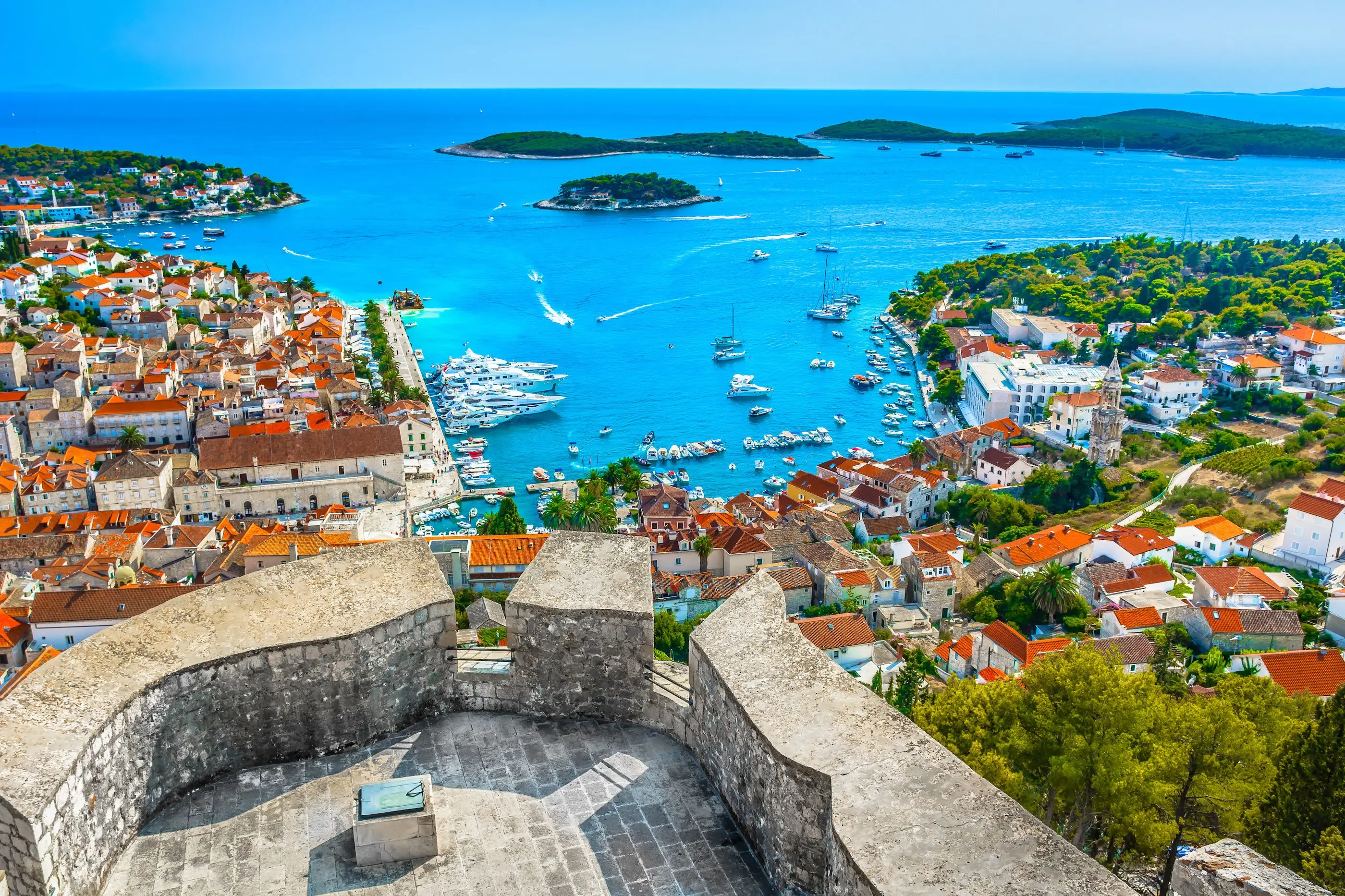
Citadel
Climb to this stone fortress above the town of Hvar for the perfect photo.
Show More

Town of Stari Grad
Stroll the atmospheric narrow streets of this small town nestled at the end of a clear blue bay.
Show More

Pakleni Islands
Hop over to these rocky islands to swim and snorkel in their picturesque little coves and lagoons.
Show More

Arsenal & Cathedral of St. Stephen
Check out where war galleys were once repaired on Hvar's main square.
Show More

Citadel
Climb to this stone fortress above the town of Hvar for the perfect photo.
Show More
prev
next

Day 4
Split


Town of Stari Grad
 Highlight of Hvar Island
Highlight of Hvar IslandStroll the atmospheric narrow streets of this small town nestled at the end of a clear blue bay.
Stari Grad is more laid back and family-oriented than Hvar Town but is becoming more popular with younger crowds and the jet-set as time goes by. Its streets are lined by stone houses decorated with bright window boxes, and there are plenty of small squares to explore that suddenly open up at the end of shoulder-rubbing alleyways. The fertile plain stretching south and west of Stari Grad is one of the few places in Europe where the ancient Greek system of field division has been preserved almost untouched. With olive groves and vineyards divided by a grid of dry stone walls and country lanes, it is easily explored on foot or by bike. A highlight within the town is the summer house and walled garden of the 16th-century poet and aristocrat Petar Hektorović called the Tvrdalj. This simple stone structure purpose-built for quiet contemplation and as a refuge for the locals in time of the attack is built around a central cloister with a turquoise pond packed with mullet. Almost immediately adjacent to the Tvrdalj is the Biankini Palace, an impressively restored Renaissance building that now houses the Town Museum
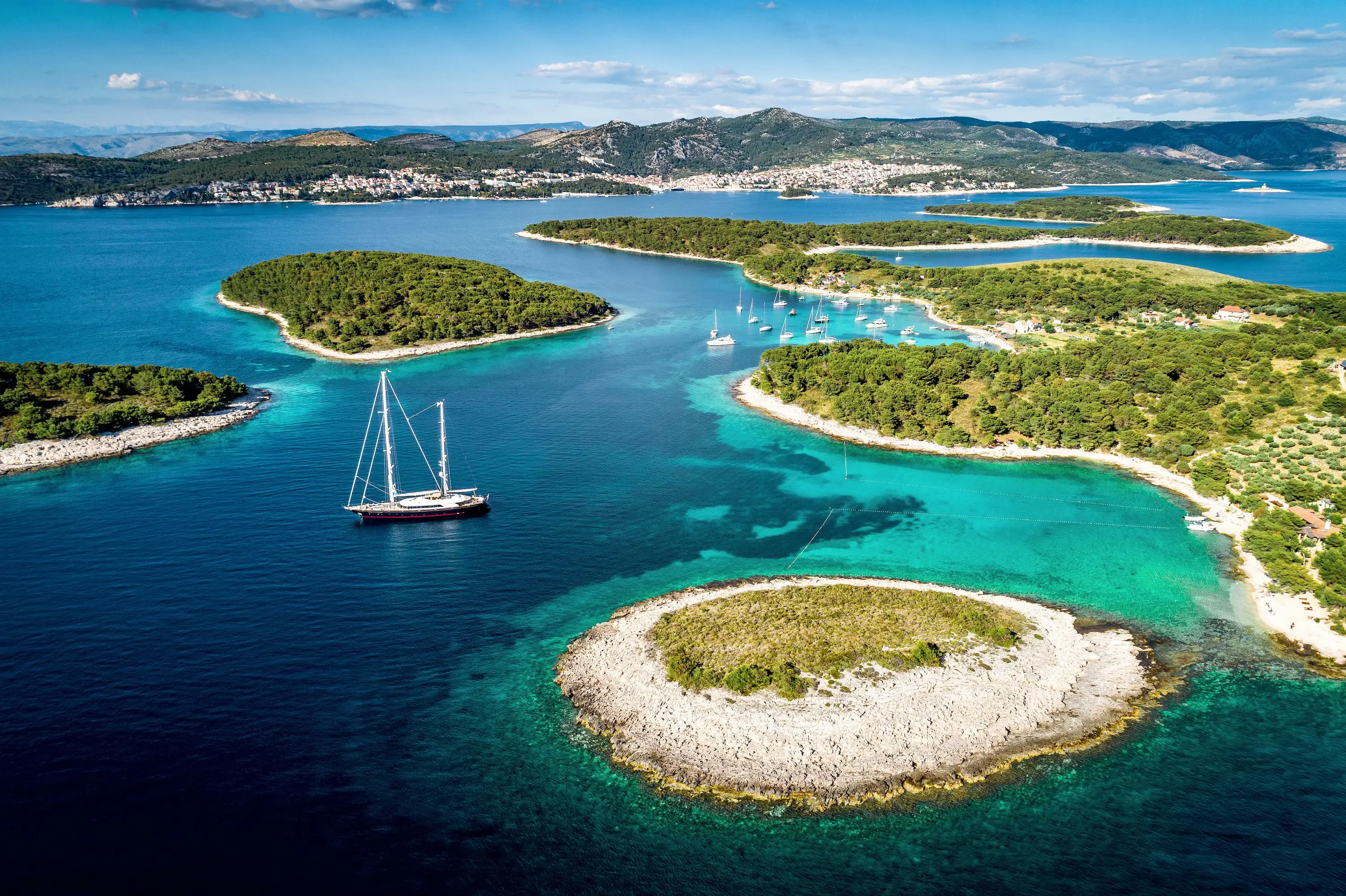
Pakleni Islands
 Highlight of Hvar Island
Highlight of Hvar IslandHop over to these rocky islands to swim and snorkel in their picturesque little coves and lagoons.
If weather permits, Hvar can be a splendid place for swimming as the sea conditions are truly exceptional, with crystal clear water. If you are hoping for soft sand beaches though, you will be disappointed. Beaches range from "pebbly" to "rocky ledge". A great option is to catch a water taxi (about 50 Kuna per person roundtrip) from the town of Hvar to the forested Pakleni Island, where the best beaches are to be found. The contorted, crooked shorelines of the islands create numerous little coves and lagoons that are nice spots for swimming and relaxing. Sveti Klement is the largest of the islands and hence has the best facilities, but there are restaurants, bars, snack stands, and toilets located near most of the beaches. Snorkeling is also possible at the Pakleni Islands, although generally there are no reefs, as is the case along most of the Croatian coastline. However, visibility is amazing and there are plenty of interesting rock formations. The best option if you are serious about snorkeling is to go with an organized boat tour.

Arsenal & Cathedral of St. Stephen
 Highlight of Hvar Island
Highlight of Hvar IslandCheck out where war galleys were once repaired on Hvar's main square.
There's plenty to see in Hvar Town beginning at the main square, Trg svetog Stjepana (St Stephen Square) where you'll find the 17th century Venetian arsenal in which war galleys were once hauled for repair. The upper story was adapted in 1612 to house the town theatre, one of the oldest Baroque playhouses in Europe. St Stephen's Cathedral at the eastern end of the square is a 16th-century building with a fragile looking four-story campanile. Some of the artwork inside might be worth your time popping in to see. The Bishop's treasury next door contains a small but fine selection of religious.

Citadel
 Highlight of Hvar Island
Highlight of Hvar IslandClimb to this stone fortress above the town of Hvar for the perfect photo.
Resting atop of the hill with breathtaking views of Hvar Town and the nearby Pakleni Islands is the Citadel, built by the Venetians in the 1550s but with the help of Spanish engineers, hence it is another name: the Spanish Fortress. It is the perfect spot for a photo of yourself standing on the turrets and overlooking the town and harbor. During the season it is open to visitors for a 40 Kuna entry fee. To reach the citadel just walk up the stairs located next to the Loggia, which is the colonnaded white building located just in front of the port. Once you reach the gardens above the town, then follow a zig-zagging path through the gardens. When you reach a gate in the garden, go through it, instead of taking the other path which is helpfully spray-painted with the word "stop". This will take you to the entrance of the citadel.

Town of Stari Grad
 Highlight of Hvar Island
Highlight of Hvar IslandStroll the atmospheric narrow streets of this small town nestled at the end of a clear blue bay.
Stari Grad is more laid back and family-oriented than Hvar Town but is becoming more popular with younger crowds and the jet-set as time goes by. Its streets are lined by stone houses decorated with bright window boxes, and there are plenty of small squares to explore that suddenly open up at the end of shoulder-rubbing alleyways. The fertile plain stretching south and west of Stari Grad is one of the few places in Europe where the ancient Greek system of field division has been preserved almost untouched. With olive groves and vineyards divided by a grid of dry stone walls and country lanes, it is easily explored on foot or by bike. A highlight within the town is the summer house and walled garden of the 16th-century poet and aristocrat Petar Hektorović called the Tvrdalj. This simple stone structure purpose-built for quiet contemplation and as a refuge for the locals in time of the attack is built around a central cloister with a turquoise pond packed with mullet. Almost immediately adjacent to the Tvrdalj is the Biankini Palace, an impressively restored Renaissance building that now houses the Town Museum

Pakleni Islands
 Highlight of Hvar Island
Highlight of Hvar IslandHop over to these rocky islands to swim and snorkel in their picturesque little coves and lagoons.
If weather permits, Hvar can be a splendid place for swimming as the sea conditions are truly exceptional, with crystal clear water. If you are hoping for soft sand beaches though, you will be disappointed. Beaches range from "pebbly" to "rocky ledge". A great option is to catch a water taxi (about 50 Kuna per person roundtrip) from the town of Hvar to the forested Pakleni Island, where the best beaches are to be found. The contorted, crooked shorelines of the islands create numerous little coves and lagoons that are nice spots for swimming and relaxing. Sveti Klement is the largest of the islands and hence has the best facilities, but there are restaurants, bars, snack stands, and toilets located near most of the beaches. Snorkeling is also possible at the Pakleni Islands, although generally there are no reefs, as is the case along most of the Croatian coastline. However, visibility is amazing and there are plenty of interesting rock formations. The best option if you are serious about snorkeling is to go with an organized boat tour.

Arsenal & Cathedral of St. Stephen
 Highlight of Hvar Island
Highlight of Hvar IslandCheck out where war galleys were once repaired on Hvar's main square.
There's plenty to see in Hvar Town beginning at the main square, Trg svetog Stjepana (St Stephen Square) where you'll find the 17th century Venetian arsenal in which war galleys were once hauled for repair. The upper story was adapted in 1612 to house the town theatre, one of the oldest Baroque playhouses in Europe. St Stephen's Cathedral at the eastern end of the square is a 16th-century building with a fragile looking four-story campanile. Some of the artwork inside might be worth your time popping in to see. The Bishop's treasury next door contains a small but fine selection of religious.

Citadel
 Highlight of Hvar Island
Highlight of Hvar IslandClimb to this stone fortress above the town of Hvar for the perfect photo.
Resting atop of the hill with breathtaking views of Hvar Town and the nearby Pakleni Islands is the Citadel, built by the Venetians in the 1550s but with the help of Spanish engineers, hence it is another name: the Spanish Fortress. It is the perfect spot for a photo of yourself standing on the turrets and overlooking the town and harbor. During the season it is open to visitors for a 40 Kuna entry fee. To reach the citadel just walk up the stairs located next to the Loggia, which is the colonnaded white building located just in front of the port. Once you reach the gardens above the town, then follow a zig-zagging path through the gardens. When you reach a gate in the garden, go through it, instead of taking the other path which is helpfully spray-painted with the word "stop". This will take you to the entrance of the citadel.
prev
next

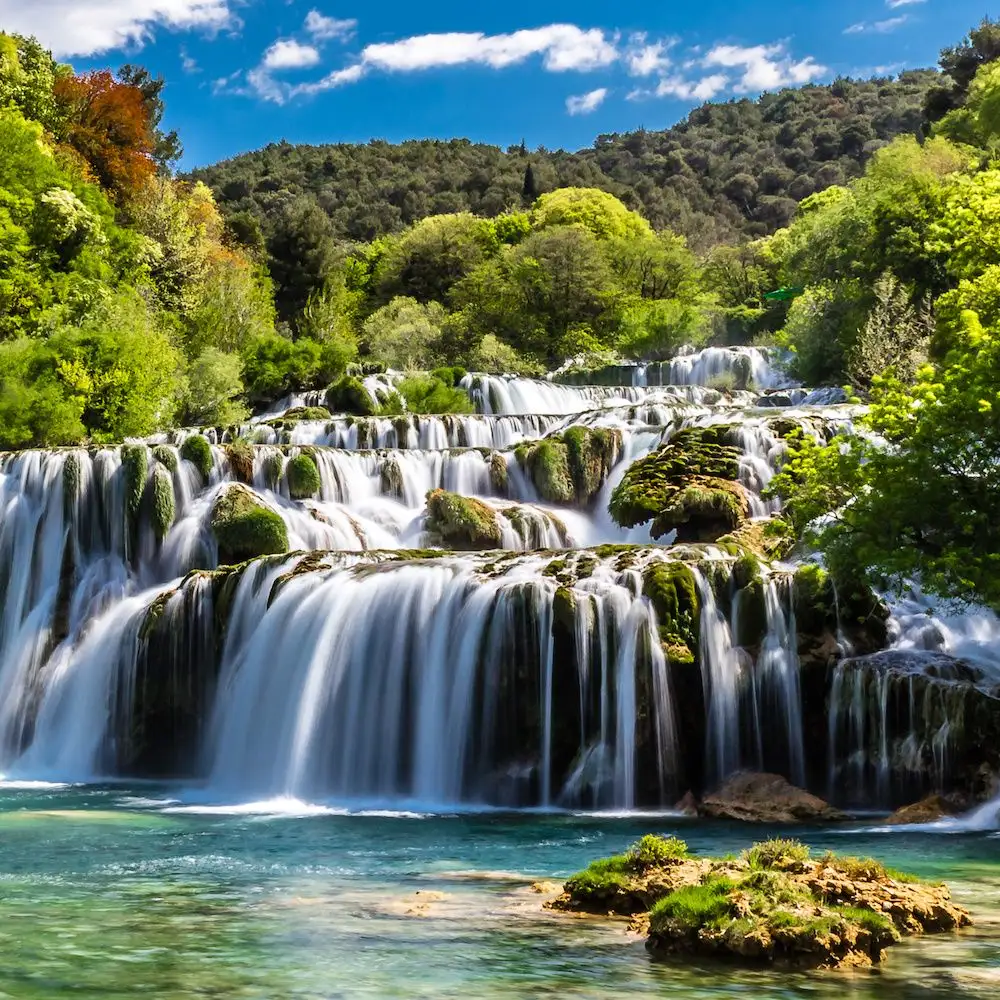
Day 5
Split
Day 5
Split


Early Morning to Mid-Day
Krka Waterfalls
While the more famous Plitvice Waterfalls are much larger and get all the press, the Krka waterfalls also pour crystal clear blue water over karst rock formations. And just like Plitvice, they are so beautiful that a National Park was created to protect them. But they also have a couple of key advantages over Plitvice. First of all they are much closer to Split, meaning it is much more manageable to visit them as a day trip. In fact Krka is only an hour from Split, versus a three hour drive to reach Plitvice. Keep in mind though that the waterfalls can only accommodate a limited number of people and the park limits entry. So if you want to be assured of getting in, either get there very early, or book ahead with an organized group. One more thing to remember is that it is not just about swimming - the National Park is also a great place for a hike. Also, don't forget your watershoes if you plan to swim, but please note that you are no longer allowed to swim beneath the main cascading falls.

Day 5
Split



Day 6
Split to Dubrovnik
Day 6
Split to Dubrovnik






6:45 AM
Transfer to Ferry Terminal
First keep in mind that the ferry terminal is located only about a 1/2-mile (800m) from the Split Old Town. Also consider that if staying in the pedestrian area of Old Town, a car cannot pick you up directly from the hotel, meaning you will have to walk a short distance with your bags anyway. If this is an issue, be sure to arrange assistance with a private transfer service or with your hotel beforehand. UberX is available in Split if you prefer to take a car. If staying in a hotel, they can also arrange a taxi pick up for you. The price should be about 10-15 EUR depending on your hotel location. For the most convenience, you can arrange a private transfer to the ferry terminal. Make sure the taxi knows which terminal you are going to: the Krilo (Kapetan Luka) catamaran terminal is opposite the bus station and the car ferry terminal is a bit further to the left. The Jadrolinija catamaran terminal is at the top of the dock area nearest the old town. If taking the Krilo catamaran, the taxi driver should drop you off beside the concrete pier where the catamarans leave from or next to the bus station on the opposite side of the street. You should see one or two catamarans waiting at the end of the pier when you arrive. If you're going to the islands in the off-season, then you'll probably need to go to the car ferry terminal further down the waterfront.

Day 6
Split to Dubrovnik



Day 7
Dubrovnik
Day 7
Dubrovnik



9:00 AM - 11:00 AM
Insider's Game of Thrones Tour, Guided
'Winter is coming' is not a phrase commonly heard in Dubrovnik unless it's on the set of the phenomenally popular television series, Game of Thrones, so take the opportunity to visit several of the locations from the show any time of the year. As soon as you approach the old city you'll immediately begin to recognize some of the sets from various episodes.

Day 7
Dubrovnik



Day 8
Depart Dubrovnik
Day 8
Depart Dubrovnik

To Be Determined
Transfer to Airport
Dubrovnik has one main airport, Dubrovnik Airport, also referred to as Čilipi Airport. The most affordable way to reach Dubrovnik airport is by public bus (2 EUR), however, this will take quite a lot of time. You can still save quite a bit of money in comparison to a taxi by taking the direct Atlas Shuttle bus (6 EUR). The buses pick up near the western entrance to Dubrovnik, Pile Gate, and departs roughly every 30 minutes during the day. Your hotel can arrange a reliable taxi which will cost roughly 35-50 EUR. UberX is also available, or you can also arrange a private transfer for added convenience. If you are picked up about 2 hours and 45 minutes before your departure time, you should arrive at the airport with over two hours to spare, depending on traffic. Keep in mind that if staying in Old Town, the taxi cannot pick you up directly from the hotel, meaning you will have to walk to the Pile Gate with your bags. If this is an issue, be sure to arrange assistance with a private transfer service or with your hotel beforehand.

Day 8
Depart Dubrovnik


What's Included In Croatia’s Coastal Charm Trip

Pre-Paid Tours and Activities:
- Highlights of Zagreb, Guided Tour
- Walking Tour of Split Old Town & Diocletian's Palace
- Guided Walking Tour of Game of Thrones Locations

Pre-Paid Transportation:
- 2nd Class Train Tickets from Zagreb-Split
- Catamaran ferry from Split to Dubrovnik

Accommodation:
- 1 nights at a hotel of your choice in Zagreb
- 4 nights at a hotel of your choice in Split
- 2 nights at a hotel of your choice in Dubrovnik

Go Real Travel Mobile App:
- Itinerary Plan & Reservations Info
- Points of Interest
- Detailed Travel Information
- Maps & Directions
Other Trips You May Like

7 Days
From$1390USD
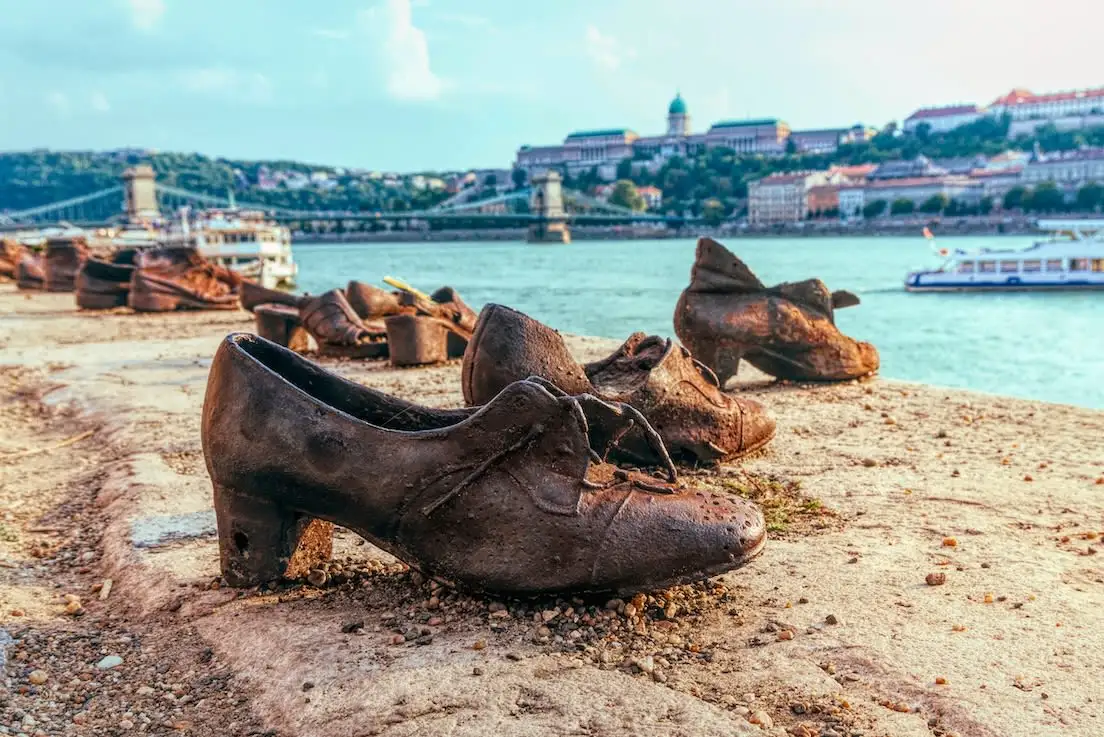
4 Days
From$897USD

5 Days
From$700USD

4 Days
From$775USD

14 Days
From$3495USD

10 Days
From$2750USD
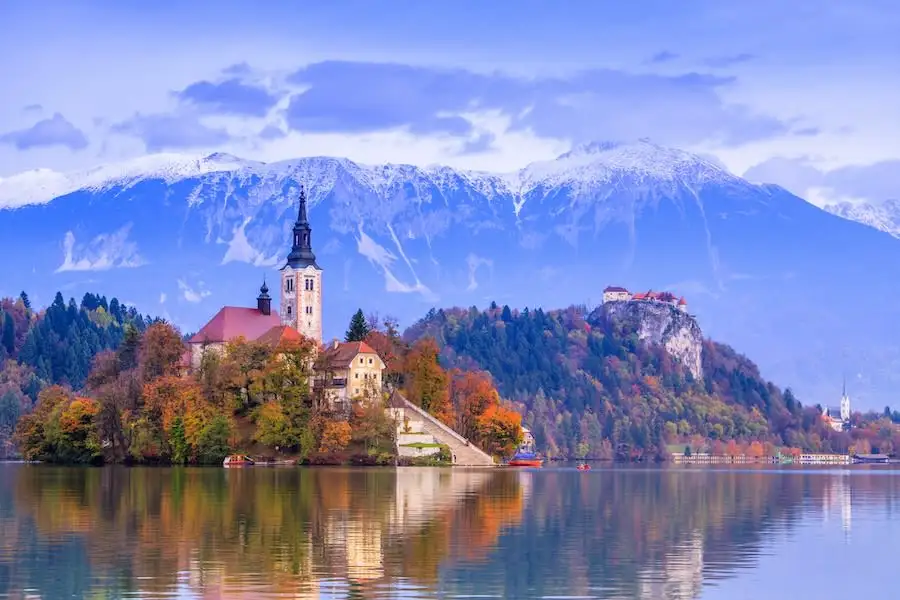
10 Days
From$2239USD
Croatia & Slovenia: 10 Days of Historic Coastline, Waterfalls & Mountains

Croatia, Slovenia

10 Days
From$1749USD
From the Adriatic to Europe's Heart: Exploring Croatia, Budapest, and Prague

Croatia, Hungary, Czech Republic
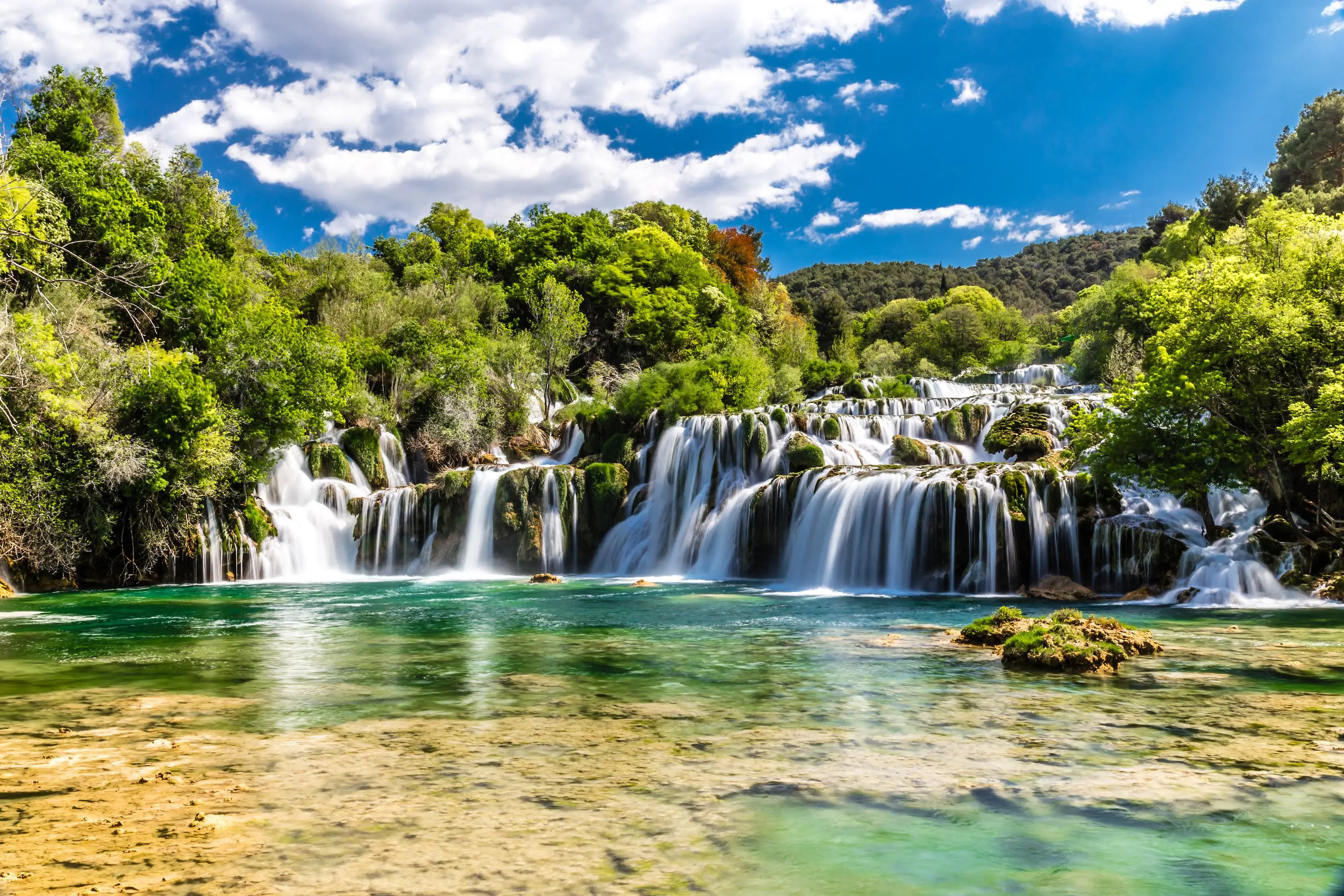
7 Days
From$1525USD
Captivating Croatia & Slovenia: A Week of Coastal Charms and Alpine Wonders

Croatia, Slovenia

7 Days
From$1390USD

4 Days
From$897USD

5 Days
From$700USD

4 Days
From$775USD

14 Days
From$3495USD

10 Days
From$2750USD

10 Days
From$2239USD
Croatia & Slovenia: 10 Days of Historic Coastline, Waterfalls & Mountains

Croatia, Slovenia

10 Days
From$1749USD
From the Adriatic to Europe's Heart: Exploring Croatia, Budapest, and Prague

Croatia, Hungary, Czech Republic

7 Days
From$1525USD
Captivating Croatia & Slovenia: A Week of Coastal Charms and Alpine Wonders

Croatia, Slovenia
prev
next
Featured Blogs
prev
next
Our Customers Say It Best
Marianne Strydom, Paarl, South Africa
I just wanted to thank you for organizing an amazing trip for me – I packed in so much in such a short period of time and everything was just perfect. The way you do things makes it possible to really get to know the destination, which for me as a travel agent could not have been better. 

Otto Chuy, Los Angeles, California
I am still surprised how everything worked as planned, without a hitch. All instructions in your itinerary were precise and correct. Your suggestions and comments in each of the locations we went to were very helpful. All your guides, without exception, were wonderful and exactly on time. 

Malini Dutta, Boston, Massachusetts
We can't thank you enough for the detailed plans, maps, and suggestions. It really felt that someone was holding our hands and showing us around. We had all the excitement of discovering foreign lands, with none of the problems that can happen while negotiating unfamiliar places. In fact, all the cities felt like home within a few hours of arriving and exploring. 

Bev and Mark Frankel, Williamsburg, Virginia
We could not be more pleased with Go Real Travel! You took the guess work out of things like public transport but still managed to allow us the freedom to tour as we wanted. Our guides were exceptional and every time I saw a Viking Cruise tour of 25 people, I realized the quality experience we were getting with Go Real. 

Marianne Strydom, Paarl, South Africa
I just wanted to thank you for organizing an amazing trip for me – I packed in so much in such a short period of time and everything was just perfect. The way you do things makes it possible to really get to know the destination, which for me as a travel agent could not have been better. 

Otto Chuy, Los Angeles, California
I am still surprised how everything worked as planned, without a hitch. All instructions in your itinerary were precise and correct. Your suggestions and comments in each of the locations we went to were very helpful. All your guides, without exception, were wonderful and exactly on time. 

Malini Dutta, Boston, Massachusetts
We can't thank you enough for the detailed plans, maps, and suggestions. It really felt that someone was holding our hands and showing us around. We had all the excitement of discovering foreign lands, with none of the problems that can happen while negotiating unfamiliar places. In fact, all the cities felt like home within a few hours of arriving and exploring. 

Bev and Mark Frankel, Williamsburg, Virginia
We could not be more pleased with Go Real Travel! You took the guess work out of things like public transport but still managed to allow us the freedom to tour as we wanted. Our guides were exceptional and every time I saw a Viking Cruise tour of 25 people, I realized the quality experience we were getting with Go Real. 



Explore cities in more detail
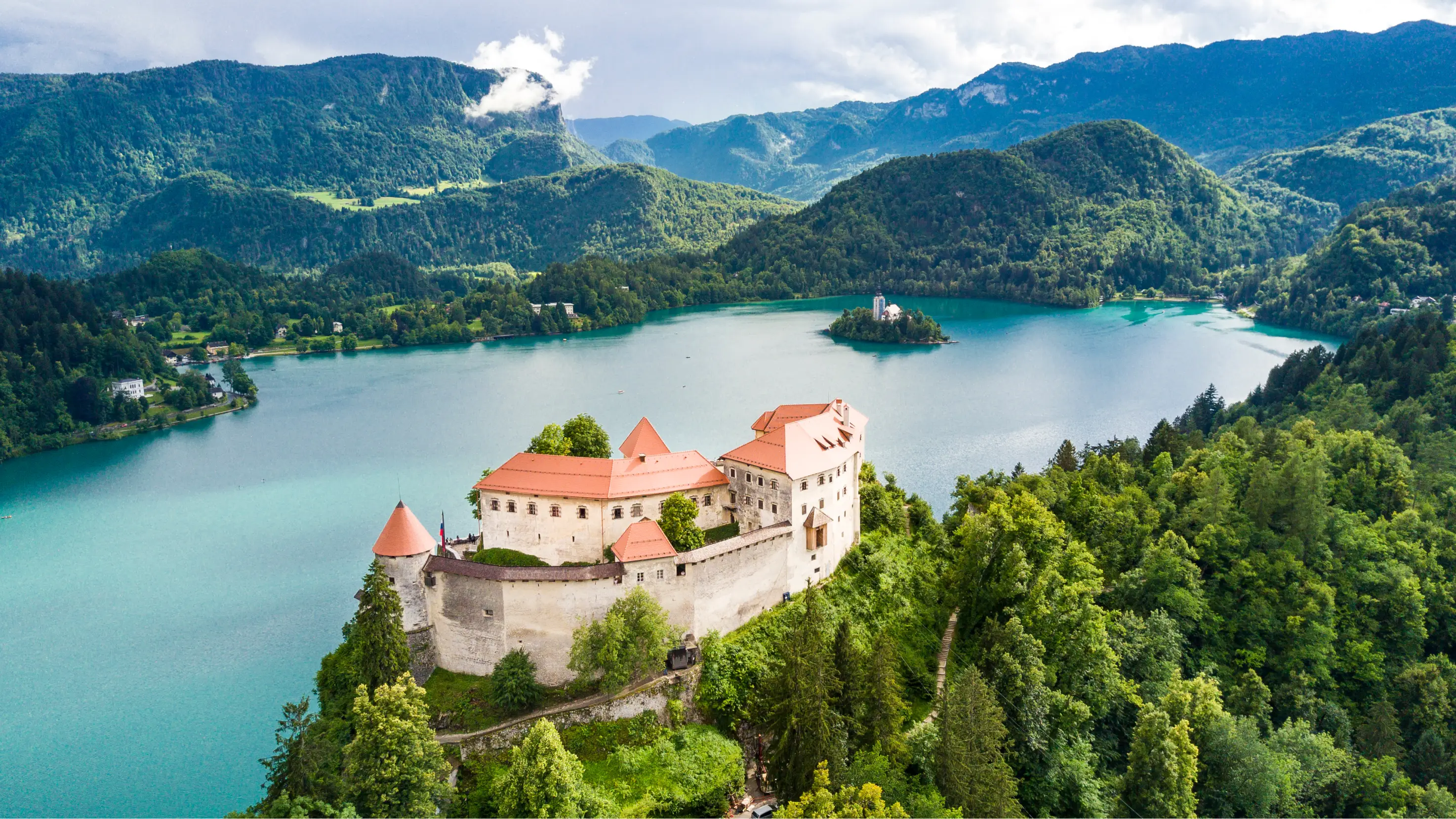
Ljubljana
One of Europe's smallest capitals, Ljubljana is still Slovenia's biggest city. What it lacks in size, though, it more than makes up for in charm, beauty, and personality. It's also one of Europe's greenest cities and is perfect for a bike ride or a leisurely walk. With plenty of open spaces, gorgeous architecture, and cultural treats, it's easy to fill the time here. The Tromostovje, or Triple Bridge, is one of Ljubljana's main attractions, connecting the Old Town with the new. Excellent pizza can be found here, and a series of bars and cafes are dotted throughout the town and along the banks of the river. The anarchic Metelkova City reveals Ljubljana's grittier side, with art exhibitions and performances housed in a disused military barracks. Ljubljana is charm and beauty compressed neatly into a small and pretty space.

Learn About Ljubljana
Build Ljubljana Trip
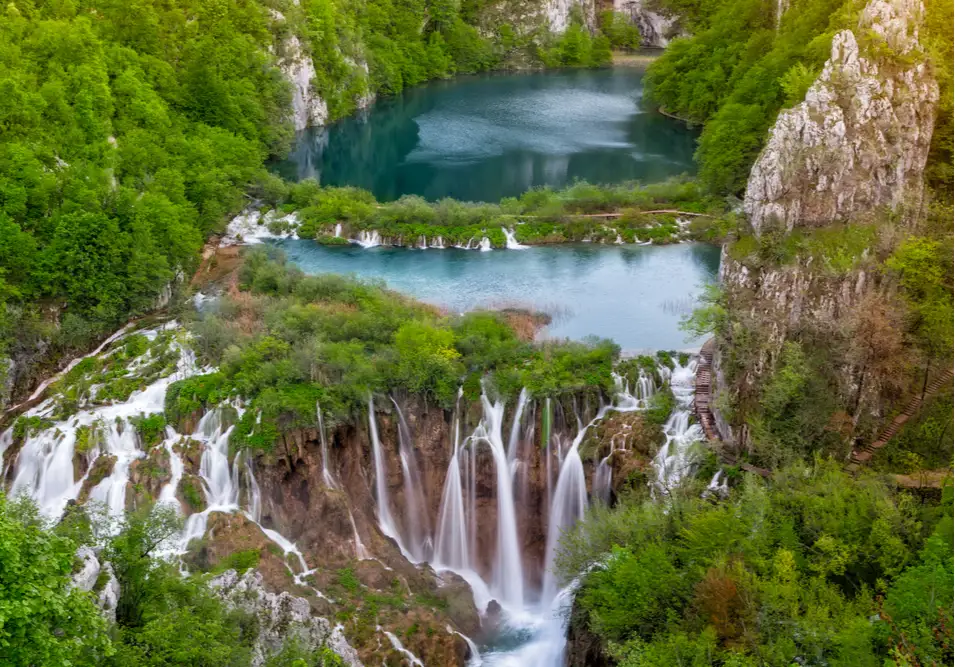
Plitvice Lakes
Plitvice Lakes in Croatia is a national park featuring 16 interconnected lakes. It was once one of Yugoslavia’s most popular tourist hotspots, and today this UNESCO World Heritage Site attracts visitors from all over the world. The lakes’ main draw is their sublime natural beauty. Turquoise pools, joined by a series of waterfalls and cascades, are set like jewels within the park’s lush green hillsides. Wooden hiking paths snake between the lakes and along the shores. Plitvice hosts an impressive variety of wildlife, from wild boars and dormice to hundreds of butterfly species, and countless types of birds. The park’s most famous resident is the elusive brown bear. Occupied by hostile forces during the Croatian War of Independence, this park’s history isn’t all paradisical. However, it’s easy to forget that troubled past when spending time by the lakes today. Today, Plitvice’s mood is all about peace, relaxation, and appreciation of stunning natural beauty.

Learn About Plitvice Lakes
Build Plitvice Lakes Trip
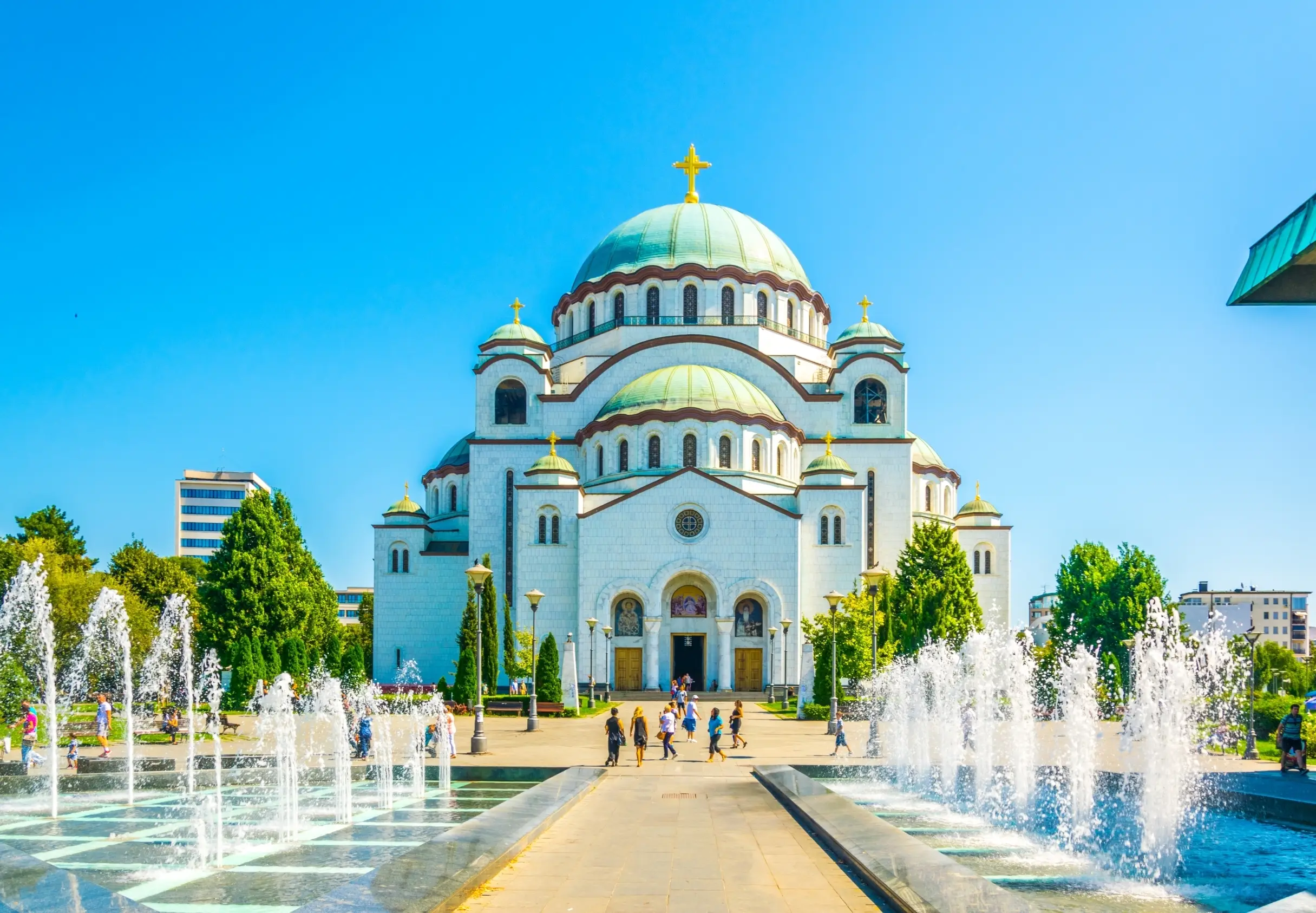
Belgrade
Belgrade is one of Europe’s oldest cities and with age comes experience. Remnants of the city’s turbulent past can be seen easily during a stroll through the streets: socialist blocks sit beside art nouveau buildings, while fragments of the Habsburg monarchy contrast with Ottoman Turk relics. If you’re looking to take in a little history, you’ll have a lot to choose from between the city’s many museums, monuments, and of course, the fortress. What Belgrade lacks in traditional beauty it makes up for in personality. Belgrade is first and foremost known for its unrivaled nightlife scene. Appropriately named the city that never sleeps, after the sun goes down you can explore floating clubs on the river, hip bars around the center, and great parties everywhere you look. During the daylight hours, you’ll find busy locals bustling around the business centers, relaxing in elegant coffee houses, or wandering through the city’s many beautiful parks.

Learn About Belgrade
Build Belgrade Trip
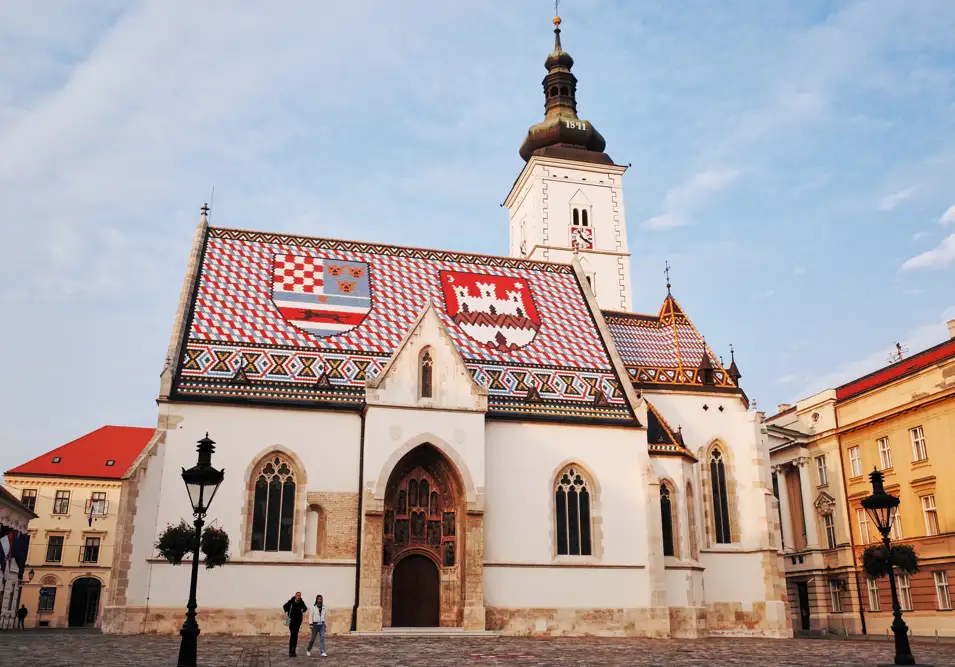
Zagreb
Zagreb is Croatia's biggest city, known for its cultural roots and vibrant street life. The city's rich history is evident in the mix of different architectural styles, including secessionist, classical, neo-Baroque, neo-Gothic, and art deco. Even the seemingly lackluster parts of town have been brought to life by street artists. At first glance, the red rooftops and cobblestone streets might seem reminiscent of other popular European cities, but you'll soon learn that Zagreb has a spirit all its own. Everywhere you go, you'll be rubbing elbows with lively locals hanging out at open cafes, gardens, and parks, or rushing to the next event on the calendar. Thanks to the spacious pedestrian zones attracting locals, expats, and visitors alike, socializing with new people and finding something unexpected to do is effortless. At night, the youth of the city becomes even more exuberant. With plenty of jazz clubs, beer halls, cocktail bars, and casinos, there's always something to do because the city never sleeps.

Learn About Zagreb
Build Zagreb Trip
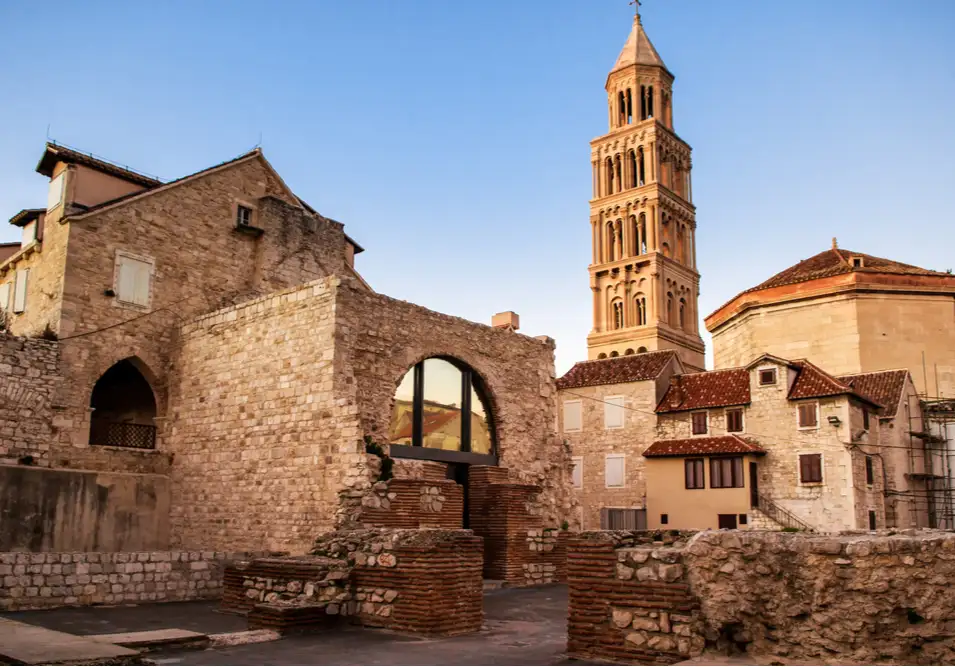
Split
A lively port city situated between mountains and sea, Split is one of Croatia's most visited—and most beautiful— cities. With historical monuments sprinkled across the Dalmatian coastline and trendy cafes and shops popping up within the ancient walls of the city center, it's easy to see why this extraordinary city is such a popular travel destination. Split is always abuzz with visitors and locals alike enjoying a seafood meal outside, relaxing on the beach, or boating on the Adriatic. The weather is almost always beautiful, so the streets tend to be crowded with people looking to take advantage of the sunshine. A walk through Split feels like a journey through past centuries. The coastal town showcases modern architecture next to structures like Diocletian's Palace, which date back to the times of the Roman Empire. In fact, Split's Old Town resides within the walls of Diocletian's Palace. As you stroll through the narrow marble streets, you'll be amazed by the number of modern restaurants and bars populating this ancient area. It's easy to pack plenty of culture, history, activity, and leisure all into one amazing trip.

Learn About Split
Build Split Trip

Dubrovnik
Situated in southern Croatia on the Adriatic Sea, Dubrovnik is famous for many different reasons. Everywhere you look in Dubrovnik is a stunning view. Known for its beautiful Old Town and ancient walls, Dubrovnik is a resilient city that deserves its nickname as the pearl of the Adriatic. Strolling through the limestone streets lined with baroque buildings, alongside the animated locals, will inspire you to keep exploring. The city walls offer spectacular views of the red rooftops in Old Town and the shimmering blues of the Adriatic Sea. After a tiring trek in the hot Croatian sun, cool off at one of Dubrovnik’s divine pebbly beaches and go swimming in the sea. The best way to end the day is a visit to Stradun, the main street, to pop into one of the cafes or restaurants, and relax during a delicious meal of Croatian specialties and wine.

Learn About Dubrovnik
Build Dubrovnik Trip

Ljubljana
One of Europe's smallest capitals, Ljubljana is still Slovenia's biggest city. What it lacks in size, though, it more than makes up for in charm, beauty, and personality. It's also one of Europe's greenest cities and is perfect for a bike ride or a leisurely walk. With plenty of open spaces, gorgeous architecture, and cultural treats, it's easy to fill the time here. The Tromostovje, or Triple Bridge, is one of Ljubljana's main attractions, connecting the Old Town with the new. Excellent pizza can be found here, and a series of bars and cafes are dotted throughout the town and along the banks of the river. The anarchic Metelkova City reveals Ljubljana's grittier side, with art exhibitions and performances housed in a disused military barracks. Ljubljana is charm and beauty compressed neatly into a small and pretty space.

Learn About Ljubljana
Build Ljubljana Trip

Plitvice Lakes
Plitvice Lakes in Croatia is a national park featuring 16 interconnected lakes. It was once one of Yugoslavia’s most popular tourist hotspots, and today this UNESCO World Heritage Site attracts visitors from all over the world. The lakes’ main draw is their sublime natural beauty. Turquoise pools, joined by a series of waterfalls and cascades, are set like jewels within the park’s lush green hillsides. Wooden hiking paths snake between the lakes and along the shores. Plitvice hosts an impressive variety of wildlife, from wild boars and dormice to hundreds of butterfly species, and countless types of birds. The park’s most famous resident is the elusive brown bear. Occupied by hostile forces during the Croatian War of Independence, this park’s history isn’t all paradisical. However, it’s easy to forget that troubled past when spending time by the lakes today. Today, Plitvice’s mood is all about peace, relaxation, and appreciation of stunning natural beauty.

Learn About Plitvice Lakes
Build Plitvice Lakes Trip

Belgrade
Belgrade is one of Europe’s oldest cities and with age comes experience. Remnants of the city’s turbulent past can be seen easily during a stroll through the streets: socialist blocks sit beside art nouveau buildings, while fragments of the Habsburg monarchy contrast with Ottoman Turk relics. If you’re looking to take in a little history, you’ll have a lot to choose from between the city’s many museums, monuments, and of course, the fortress. What Belgrade lacks in traditional beauty it makes up for in personality. Belgrade is first and foremost known for its unrivaled nightlife scene. Appropriately named the city that never sleeps, after the sun goes down you can explore floating clubs on the river, hip bars around the center, and great parties everywhere you look. During the daylight hours, you’ll find busy locals bustling around the business centers, relaxing in elegant coffee houses, or wandering through the city’s many beautiful parks.

Learn About Belgrade
Build Belgrade Trip

Zagreb
Zagreb is Croatia's biggest city, known for its cultural roots and vibrant street life. The city's rich history is evident in the mix of different architectural styles, including secessionist, classical, neo-Baroque, neo-Gothic, and art deco. Even the seemingly lackluster parts of town have been brought to life by street artists. At first glance, the red rooftops and cobblestone streets might seem reminiscent of other popular European cities, but you'll soon learn that Zagreb has a spirit all its own. Everywhere you go, you'll be rubbing elbows with lively locals hanging out at open cafes, gardens, and parks, or rushing to the next event on the calendar. Thanks to the spacious pedestrian zones attracting locals, expats, and visitors alike, socializing with new people and finding something unexpected to do is effortless. At night, the youth of the city becomes even more exuberant. With plenty of jazz clubs, beer halls, cocktail bars, and casinos, there's always something to do because the city never sleeps.

Learn About Zagreb
Build Zagreb Trip

Split
A lively port city situated between mountains and sea, Split is one of Croatia's most visited—and most beautiful— cities. With historical monuments sprinkled across the Dalmatian coastline and trendy cafes and shops popping up within the ancient walls of the city center, it's easy to see why this extraordinary city is such a popular travel destination. Split is always abuzz with visitors and locals alike enjoying a seafood meal outside, relaxing on the beach, or boating on the Adriatic. The weather is almost always beautiful, so the streets tend to be crowded with people looking to take advantage of the sunshine. A walk through Split feels like a journey through past centuries. The coastal town showcases modern architecture next to structures like Diocletian's Palace, which date back to the times of the Roman Empire. In fact, Split's Old Town resides within the walls of Diocletian's Palace. As you stroll through the narrow marble streets, you'll be amazed by the number of modern restaurants and bars populating this ancient area. It's easy to pack plenty of culture, history, activity, and leisure all into one amazing trip.

Learn About Split
Build Split Trip

Dubrovnik
Situated in southern Croatia on the Adriatic Sea, Dubrovnik is famous for many different reasons. Everywhere you look in Dubrovnik is a stunning view. Known for its beautiful Old Town and ancient walls, Dubrovnik is a resilient city that deserves its nickname as the pearl of the Adriatic. Strolling through the limestone streets lined with baroque buildings, alongside the animated locals, will inspire you to keep exploring. The city walls offer spectacular views of the red rooftops in Old Town and the shimmering blues of the Adriatic Sea. After a tiring trek in the hot Croatian sun, cool off at one of Dubrovnik’s divine pebbly beaches and go swimming in the sea. The best way to end the day is a visit to Stradun, the main street, to pop into one of the cafes or restaurants, and relax during a delicious meal of Croatian specialties and wine.

Learn About Dubrovnik
Build Dubrovnik Trip
prev
next


 Map of Your Itinerary Route
Map of Your Itinerary Route
Zoom In to the cities to see your itinerary in more detail


 4.8
4.8 